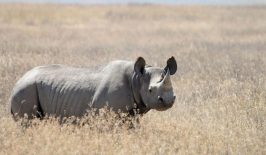Technology that was originally developed for finding and identifying stars billions of miles away is now being put to use a little closer to home.
When Serge Wich, a conservationist at Liverpool’s John Moores University, wanted to speed up the identification and cataloguing of wild animal populations, visiting the university’s astronomy department probably wasn’t high on his list of priorities.
However, as it turns out, a collaboration between the different scientific branches has resulted in an infrared drone system that allows researchers to quickly and easily locate, identify and log animals roaming in the wild – whether they’re obscured by vegetation or not.
The idea of combining infrared cameras with drones is not particularly new – they’ve previously been used in climate protection efforts and even to count migrating whales – and Wich himself had previously been working with such technologies in wildlife tracking trials in the UK. Although he was able to spot animals quickly, there was still the issue of how to identify the creature from great heights. Luckily, Wich did not need to look far to find an answer to his problem.
When lamenting this issue over the garden fence to his neighbour, and fellow John Moore’s University researcher, Dr. Steve Longmore, Wich was surprised to discover his astrophysicist friend had a potential solution in mind. Dr Longmore explained a colleague of his had been using similar infrared systems to find and identify stars in the solar systems, suggesting such a system could also be applied to terrestrial concerns.
Armed with this advice, Wich met another John Moore’s researcher, Dr Claire Burke, who had been working with software and technology used to identify distant stars via their unique infrared signature. Dr Burke was able to adjust the machine learning software to also identify animals via the same process, meaning the technology can rapidly idenfity and catalogue any wildlife spotted. After revealing the project at the annual European Astronomical Society, Dr Burke told the BBC:
“When we look at animals in the thermal infrared, we’re looking at their body heat and they glow in the footage. That glow is very similar to the way that stars and galaxies in space glow. So we can apply techniques and software used in astronomy for decades to automatically detect and measure this glow.”
What’s more, the heat signature of an animal can also reveal hidden and useful information. For example, if an animal is wounded or injured, that area of its body will glow hotter, meanwhile an animal which is sick might also have a different heat profile to a healthy member of the same species. This method has huge advantages over the previous, more analogue, approaches which often relied on spending extended periods in the field or sifting through thousands of photos snapped by camera traps. Although AI learning machines are helping with the second method, Wich and Burke’s system can survey dozens of square kilometres in a single drone flight, saving huge amounts of time, labour and money in the process. This means the data can be put to more immediately and timely use in the fight against poaching and animal extinction.
So far, the field trials of the project has yielded promising results. In one search for the criticially endangered Riverine rabbit in South Africa, the team managed five sightings. An impressive haul when you consider there have been less than 1,000 recorded sightings of the rabbit in total, and there are possibly less than 500 adults currently alive in the wild.









